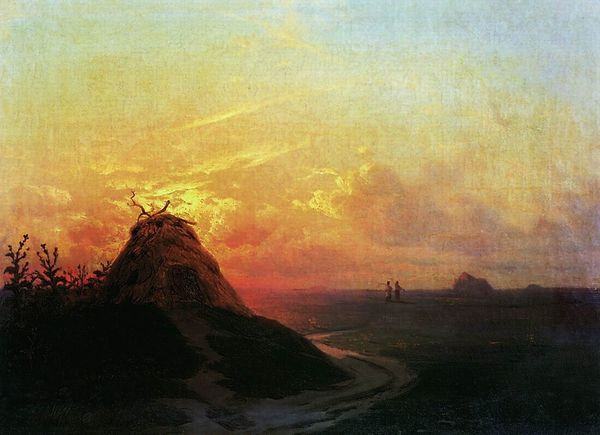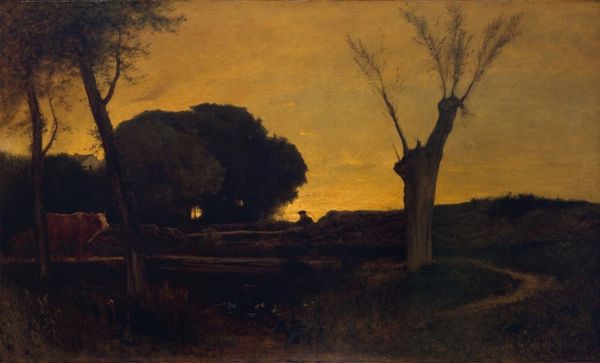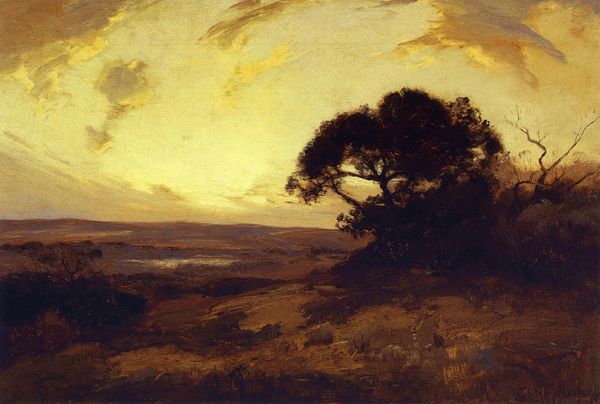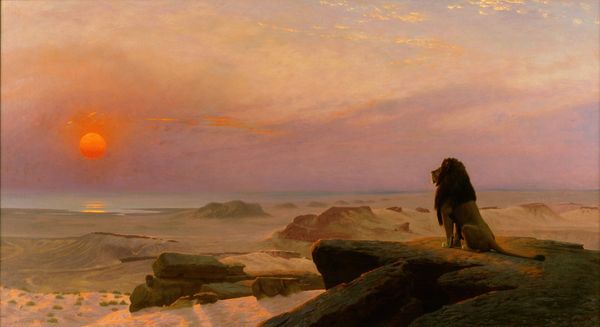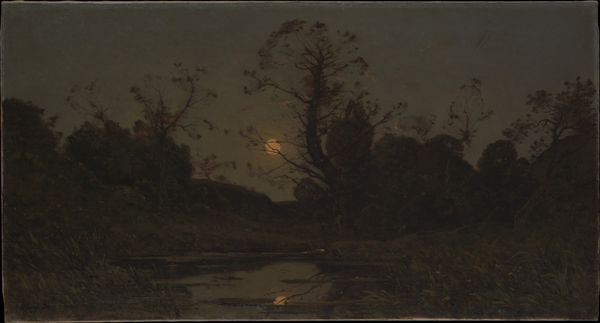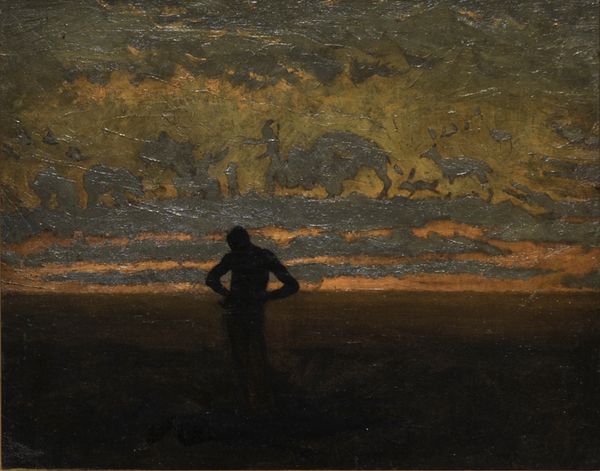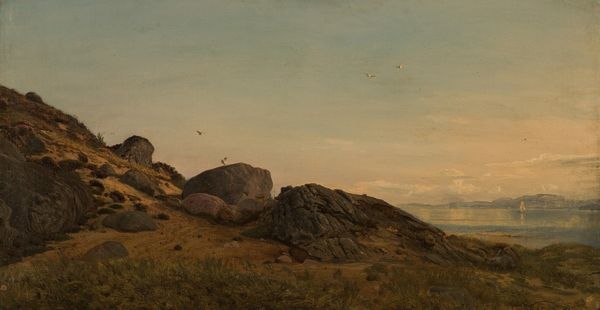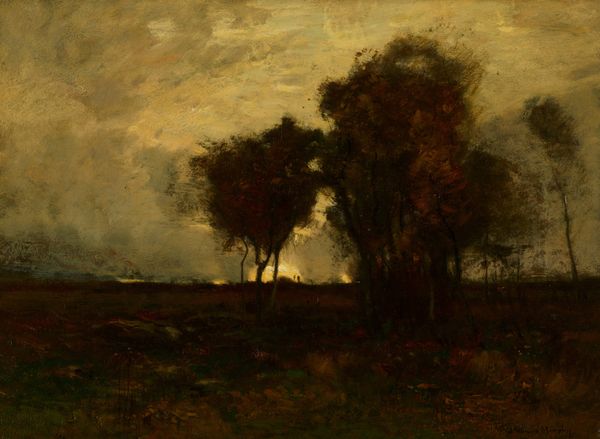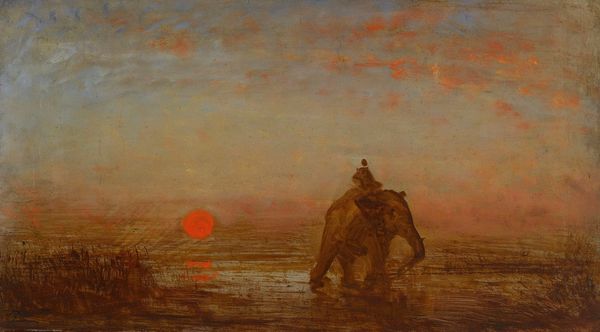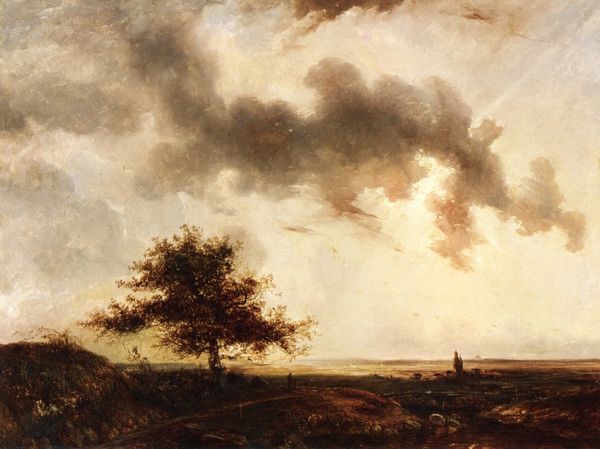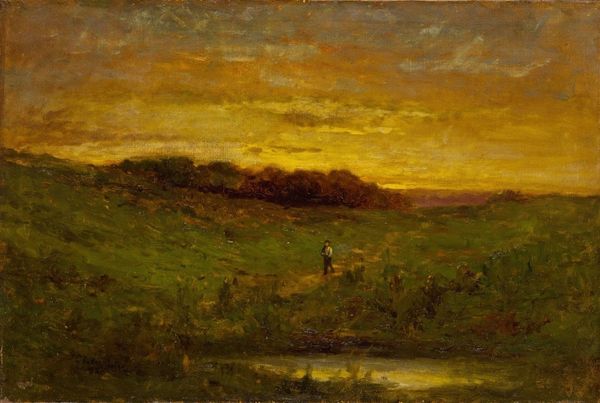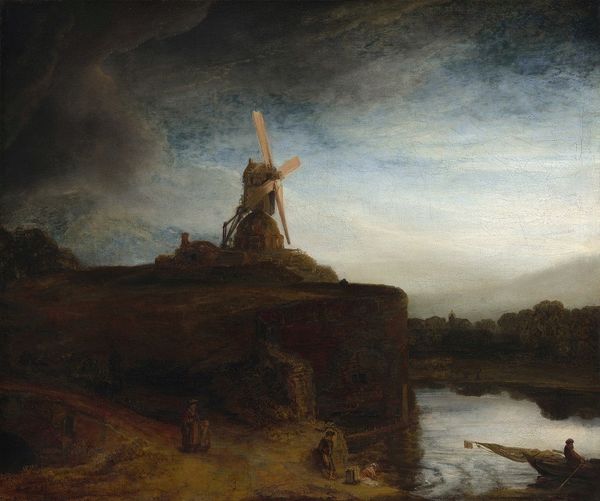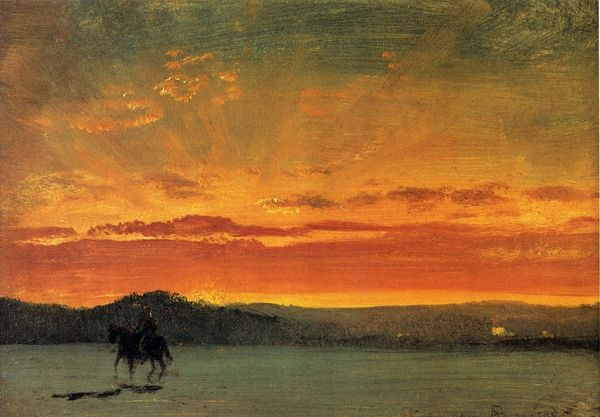
Copyright: Public domain
Curator: Jules Dupre's "The Windmill," painted in 1859, offers a glimpse into the artist's Romantic sensibilities through this landscape scene rendered in oil. Editor: My initial reaction is one of quiet drama. The color palette, though muted, feels so emotionally charged—a heavy sort of calm before a storm. Curator: The silhouetted windmill set against the fiery sky places it as more than just a building. Industrialisation meets sublime nature perhaps? This work resonates with the changing relationship of humanity with landscape that characterised much of 19th century France. Editor: Absolutely. The texture alone—the tangible strokes, visible impasto in certain areas—suggests a deep engagement with the materiality of paint itself. This tactile quality emphasizes its presence, as if this landscape is a physical entity rather than merely representational. Curator: And in that, Dupre's embrace of plein-air painting should also not be dismissed; we are reminded of the increasing artistic concern with authentically portraying lived moments within landscape, particularly moments interwoven with the socio-historical fabric of rural existence. The windmill being the centre point, it reminds the viewer of the changes brought to everyday life with the expansion of agriculture. Editor: Do you think Dupre utilizes the windmill's placement to suggest the structure of society itself, using shadow to hide what isn't illuminated? What do the darkened plains to the right evoke in contrast to the vibrance of the sky? There's certainly a lot going on, not only in the implied symbolism of each area of the piece, but also in the masterful brushstrokes that bring Dupre's idea into vivid and moving reality. Curator: These artistic endeavours of Dupre reflect a conscious acknowledgement of the transformative political movements transpiring in 19th-century France, particularly through the lives of its working class. In "The Windmill", we see their reflection with an embrace of revolutionary artistic and social visions. Editor: Well, regardless of its origins, Dupre gives the viewer something of powerful aesthetic worth—his expert execution of light, shape and shade result in a wonderful, unforgettable piece. Curator: Precisely. We find within this piece the potential for engaging in ongoing societal critique, all stemming from Dupre's choice of portraying, via his skill, an understated narrative of the time.
Comments
No comments
Be the first to comment and join the conversation on the ultimate creative platform.
